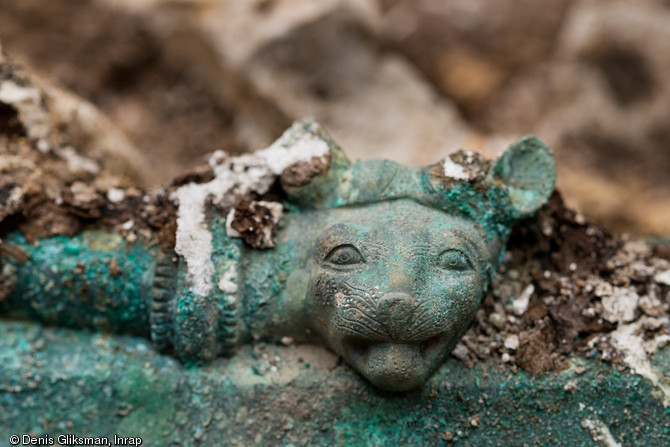France: Lavish 2,500-year-old Celtic prince's tomb unearthed is 'extraordinary' discovery




French archaeologists have found what they say is the "extraordinary" tomb of a Celtic prince who lived some 2,500 years ago.
The burial site, which at 40m (130ft) of diameter is one of the largest from its period ever to be unearthed, was discovered in an industrial area near Troyes, about 150km south east of Paris.
A team with National Archaeological Research Institute (Inrap) that has been working on the site since October said it contained a remarkable amount of artefacts, some believed to be of ancient Greek and Etruscan origins.
The discovery was lauded by France's Prime Minister Manuel Valls, who tweeted his congratulations to Inrap.
Magnifique découverte d'une tombe princière celte. La France est riche de son héritage millénaire. Bravo à l'Inrap ! pic.twitter.com/rmYLM2GadG
— Manuel Valls (@manuelvalls) March 4, 2015The archaeologists said the number and value of riches interred with the deceased, who lays with his chariot at the centre of the burial mound, suggest he was a high ranked aristocrat from the so-called Hallstatt culture that dominated central Europe during the Early Iron Age.
"The tomb contains mortuary deposits of sumptuousness worth that of the top Hallstatt elites," Inrap said.
Those include a bronze wine cauldron decorated with relieves of Greek gods and Lions, and an amphora in ceramic adorned with images of Dionysus, the Greek god of wine.
"The period between the late 6th Century and the beginning of the 5th Century BC was characterised by the economic development of Greek and Etruscan city-states in the West, in particularly Marseille," Inrap explained.
"Mediterranean traders come into contact with the continental Celtic communities as they searched for slaves, metals and precious goods (including amber)."
© Copyright IBTimes 2025. All rights reserved.




















